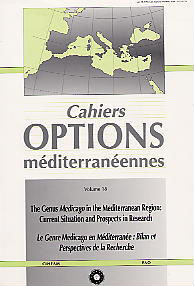| Article précédent | p. 177-179 |
The spontaneous nodulation of alfalfa
The establishment of symbiosis between leguminous plants and the soil bacteria Rhizobia is investigated using the Nar or spontaneous nodulation phenomenon, i.e. ability of some plants to develop nodulations in the absence of Rhizobium. It is shown that the spontaneous nodule organogenesis is initialized in both Nar and non-Nar plants but more or less blocked further (at the nodule primordia stage), suggesting a regulation of the nodule morphogenesis after the induction of the primordium. Purified nodulation factors were shown to be implied in mitogenic phenomenon, increasing the nodulation phenomenon. Finally, the comparison between spontaneous and Rhizobium-induced nodulation suggests that the cortical divisions do not result from a bacterial activation but rather from a spontaneous reactivity of the cortex.
- [ Afficher ]
- [ Télécharger ]
- [ Exporter la citation ]
Vous pouvez télécharger la citation au format :
- [ Imprimer ]
-
Mots-clés
FORMATION DE NODOSITES, LUZERNE, MEDICAGO SATIVA, RHIZOBIUMCiter cet article
Grosjean C., Huguet T. The spontaneous nodulation of alfalfa. In : Genier G. (ed.), Prosperi J.M. (ed.). The Genus Medicago in the Mediterranean region: Current situation and prospects in research . Zaragoza : CIHEAM, 1996. p. 177-179. (Cahiers Options Méditerranéennes; n. 18). Meeting of the Mediterranean Working Group on Medicago of the FAO/CIHEAM Inter-Regional Research and Development Network on Pastures and Fodder Crops, 1995/10/19-22, Hammamet (Tunisia). http://om.ciheam.org/om/pdf/c18/96605773.pdf



